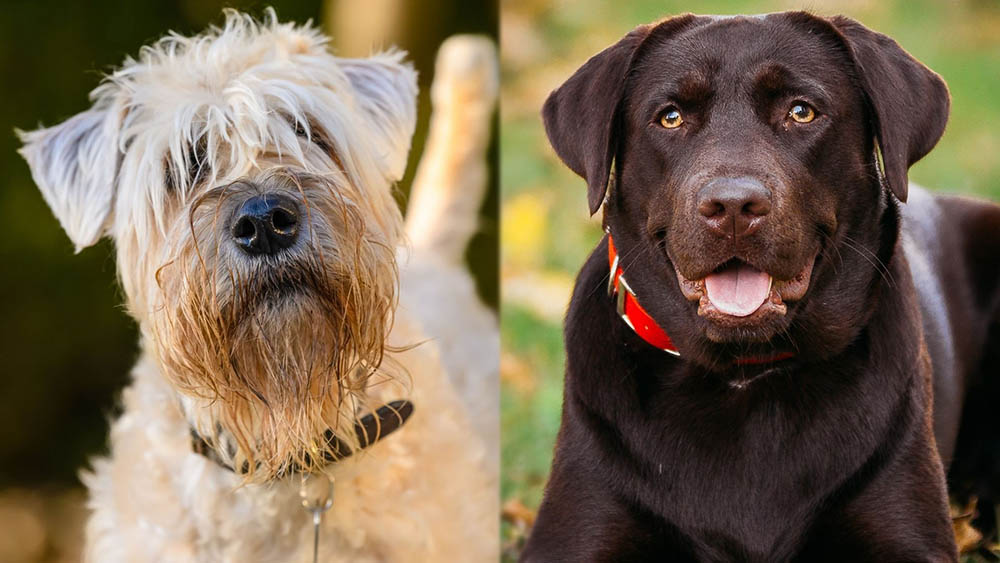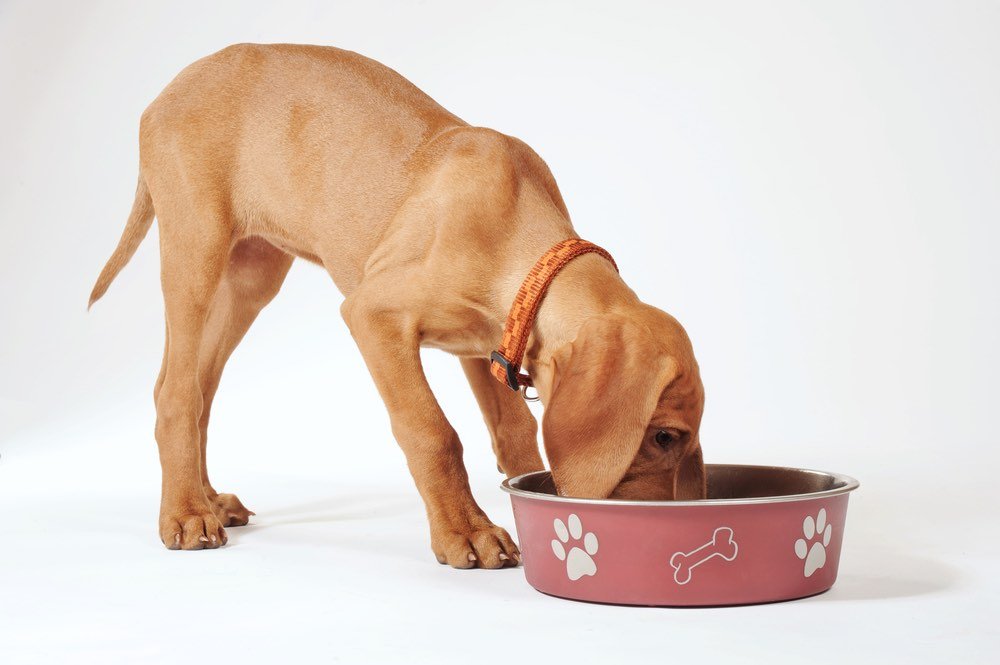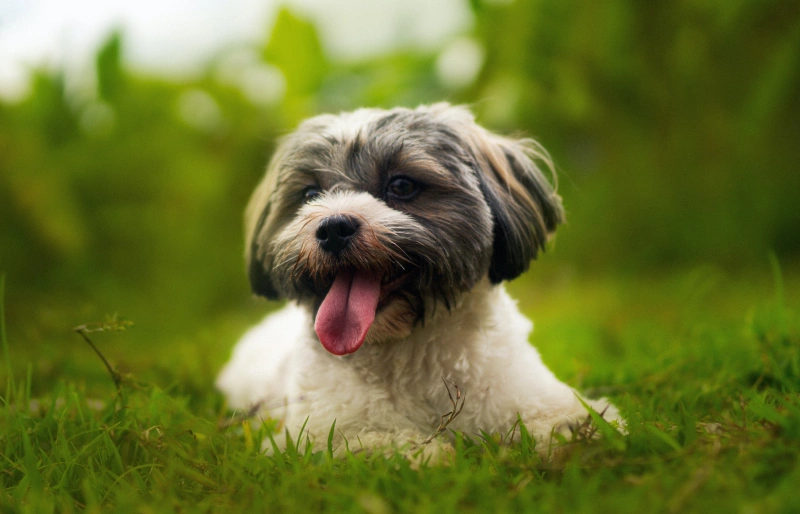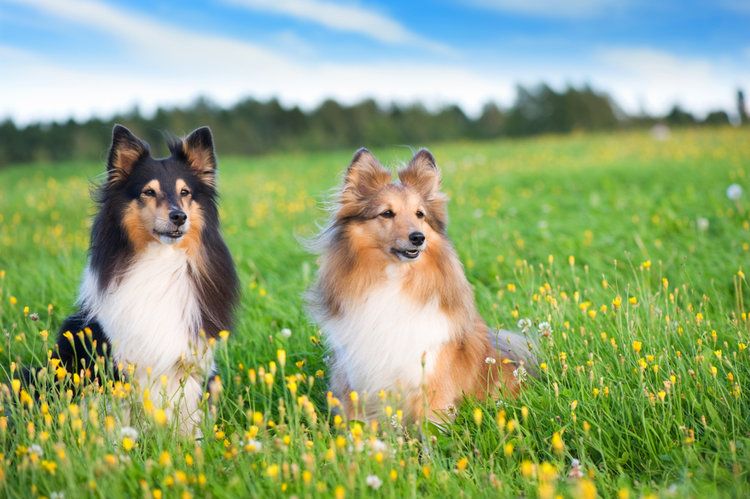Wheatador (Wheaten Terrier Lab Mix): Pictures, Care Guide, Temperament & More
Updated on

Click to Skip Ahead
The Wheatador is a mix of two affable and intelligent dog breeds with a soft wavy coat that comes in a huge range of colors. This is an energetic, almost too-friendly mixed breed perfect for families and astonishingly easy to train with the right treats on hand. If you’re interested in learning more about Wheatadors, we’ve got all the info you need. Join us below as we break down their physical traits, temperament, how to care for them, and more.
| Height: | 17–23 inches |
| Weight: | 35–55 pounds |
| Lifespan: | 12–15 years |
| Colors: | Brown, cream, wheat, chocolate, fawn, black, white |
| Suitable for: | Active families with or without children |
| Temperament: | Bubbly, affectionate, bright, trainable |
The Wheatador is a mix between the Soft-coated Wheaten Terrier and the Labrador Retriever, both known for their strong work ethic, intelligence, and amiability. Both have been used for various hunting jobs. The Labrador was originally a fishing dog in Newfoundland, while the Wheaten Terrier was developed as a poor man’s loyal hunting hound in Ireland. They can have a light golden coat if both parents have light colors, but darker chocolate and even black are possible too.
Wheatador Characteristics
Wheatador Breed Puppies
Wheatadors are a rare crossbreed owing to the rarity of the Wheaten Terrier in general, but they have some devotees on social media. We recommend checking Facebook groups and nearby dog organizations. Puppies will be difficult to find, but if you’re lucky you may find a litter or an older rescue that’s available to go to a new home.

Temperament & Intelligence of the Wheatador
The Wheatador is a gentle spirit who loves being around their family and other people as much as possible. They’re eager to please thanks to their Lab heritage, and their Wheaten blood helps make them doubly trainable with the right reward. They’re glad to throw the ball around, but they’re not very intense dogs and are happy to curl up at your feet at the end of the day.
Wheatadors are generally not great watch dogs because they’re more likely to make friends with an intruder than bark at them, but that’s part of their charm. They make great hunting dogs, too, with an exceptional work ethic, natural athleticism, and fearless love of the water.
Are These Dogs Good for Families? 👪
Yes, Wheatadors get along famously with nearly anyone provided they receive enough socialization early in life. Young or untrained dogs may get a little rowdy with younger children, so we recommend supervising them to enforce proper behavior and curb bad habits. For example, redirect a nippy puppy away from the kids and toward a more acceptable outlet for their teething pains. With time and patience, they’ll temper into a more mellow but still active dog you can trust around your kids.
Wheatadors are also great service animals for seniors or the disabled, naturally loving and carrying a strong sense of loyalty. Even better, they don’t have a standoffish bone in their body and make fast friends with nearly anyone.
Does This Breed Get Along With Other Pets? 🐶 😽
Yes, Wheatadors have a winning personality that can get along with nearly any other dog and many cats. However, the key is to socialize them extremely well from 8 to 16 weeks, which is the prime “socialization period: or window. Thankfully, they’re naturally social dogs that thrive off being around other people or dogs.
To minimize disagreements with other pets, we strongly recommend each pet have their own private space to retreat to. Wheatadors are gregarious but can get a little high energy for some other pets and even agitate more aloof dogs. Use your best judgment when introducing your new Wheatador to your existing pets and do so slowly to prevent bad first impressions. They matter just as much to your dog as they do to people, and maybe even more so!
Things to Know When Owning a Wheatador
Food & Diet Requirements 🦴
This is a highly active breed that needs the highest quality dog food you can comfortably afford. They do great on a balanced kibble with at least 20% protein content and a mix of fat, carbs, and other trace nutrients but also fare well on organic or grain-free diets. With puppies, we recommend feeding four smaller portions per day and slowly decreasing that to three or even two meals a day at maturity. It really depends on your dog’s particular metabolism. Smaller Wheatadors that take after Wheaten Terriers may not eat as much as larger dogs with a more Lab-like physique.
Exercise 🐕
The importance of exercise for Wheatadors can’t be understated, and it’s critical to keep their energy levels manageable. With enough playtime or walks throughout the day, they’ll be calmer later in the day. Lacking enough exercise in their routine can make a Wheatador anxious, destructive, and even aggressive in some cases.
Mental enrichment is similarly important to provide to soothe fearfulness, improve mental acuity, and promote a sense of calm well-being. A bored dog can turn to any number of unhealthy outlets, but it’s your job to make sure your Wheatador gets enough mental stimulation. That can be as complex as setting up a training regimen or introducing them to more complex games, or as simple as investing in a range of enrichment puzzle toys like Kongs or snuffle mats.
Training 🎾
We touched on it above, but training really helps this sunny breed shine even more. Wheatadors are great dogs for beginners to dog training because they’re naturally eager to please you but work even better with a high-value treat at hand. Take advantage of this while strictly adhering to positive reinforcement techniques.
Put simply, negative reinforcement or punishment works very poorly with dogs and can even exacerbate or cause behavioral problems. It’s hard to not get frustrated when dealing with a young puppy’s antics and lapse into puppy blues, but don’t get frustrated! Maintain a calm, steady presence while patiently redirecting bad behavior and you’ll have the most well-behaved dog on the block.
Grooming ✂️
A Wheatador’s coat may be silky and wavy like the Wheaten Terrier parent’s coat, or straight and short like the Lab’s. They’re more predisposed to have a wavy coat if the Lab parent has a shaggy coat; otherwise, it’s something of a crapshoot what type of coat their Wheatador puppies will have.
As far as grooming goes, it depends on which coat the dog inherits. The Wheaten Terrier coat isn’t as high maintenance as you’d think at a glance, but it still needs a good weekly brushing with a double-sided de-shedding comb. Use the pin-headed side to remove stubborn tangles and the soft side to redistribute skin/hair oils, which restores fur luster. With a good grooming routine and regular baths as needed or when your Wheatador gets visibly dirty, their coat will shine like the breed’s namesake flaxen wheat.
Health and Conditions 🏥
- Addison’s disease: A hormonal condition running in Wheatens that causes fatigue, decreased energy, weight loss, diarrhea, and more signs. The good news is that it’s treatable and typically has no impact on a dog’s lifespan.
- Joint dysplasia: Labs are particularly prone to this painful arthritic condition that affects the elbow and knee joints.
- Protein conditions: Wheaten Terriers and their Wheatador kin share a vulnerability to protein-losing enteropathy or PLD, which can cause catastrophic organ damage, plus raise the risk of cancer.
- Progressive retinal atrophy: Also called PRA, Labs and Wheaten Terriers are both susceptible to this nasty disease that causes retinal detachment and eventual progressive vision loss.
Male vs. Female
Like other breeds, male Wheatadors trend a little larger than females, but that’s not a hard-and-fast rule. Hybrids like Wheatadors aren’t as easy to estimate the mature size of because they have no breed standards, and even puppies from the same litter can vary dramatically. There could be a male that ends up more like a smallish Wheaten Terrier, while females can take after their Lab parent and grow larger than her brothers.
3 Little-Known Facts About the Wheatador
1. Wheatens Were Bred Out of Necessity in 19th Century Ireland
Records are kind of sparse, but we know that Wheatens became popular as a “poor man’s dog” due to various draconian laws that limited ownership of pure breeds like spaniels and hounds to nobility. Wheatens are thought to be descended from scrappy breeds like the Kerry Blue Terrier and Irish Terrier but with some Poodle and possibly Portuguese Water Dog ancestry.
2. Both Labs and Wheaten Terriers Have Webbed Toes
Not every dog has them, but many Wheaten Terriers and Labs inherit webbed toes from their long history as water-faring fishing dogs. The toes helped them paddle to retrieve fishing nets and pass messages between fishing boats in shallow waters, and Wheatadors may occasionally inherit this genetic quirk.
3. Labs Were the Most Popular Dog in the US for 30+ Years
The Lab’s inexhaustible positivity, trainability, intelligence, and loyalty helped them reign for over 3 decades as America’s Favorite Dog, but they were recently dethroned by the French Bulldog. If a fraction of that charm reaches the Wheatador via genetics, they’re an excellent dog for many households out there.
Final Thoughts
Wheatadors are a mix of the spunky Wheaten Terrier and the beloved Labrador Retriever, inheriting their happy-go-lucky attitude, loyalty, affectionate nature, and natural athleticism. They take a bit of work to groom and might try your patience during their puppy phase, but Wheatadors are the perfect choice for a novice to pet ownership.
See also:
- Husky Wheaten Terrier Mix: Pictures, Care Guide, Temperament & More
- Soft-Coated Golden (Wheaten Terrier Golden Retriever Mix): Pictures, Care Guide, Temperament & More
Featured Image Credit: (L) Wirestock Creators, Shutterstock | (R) Ajtai Krisztina, Shutterstock














